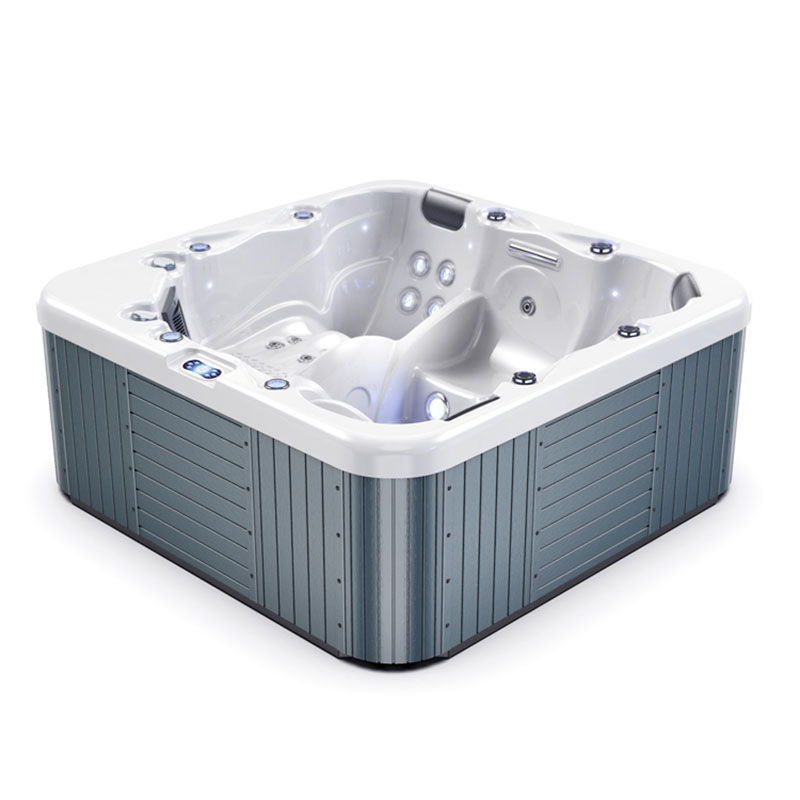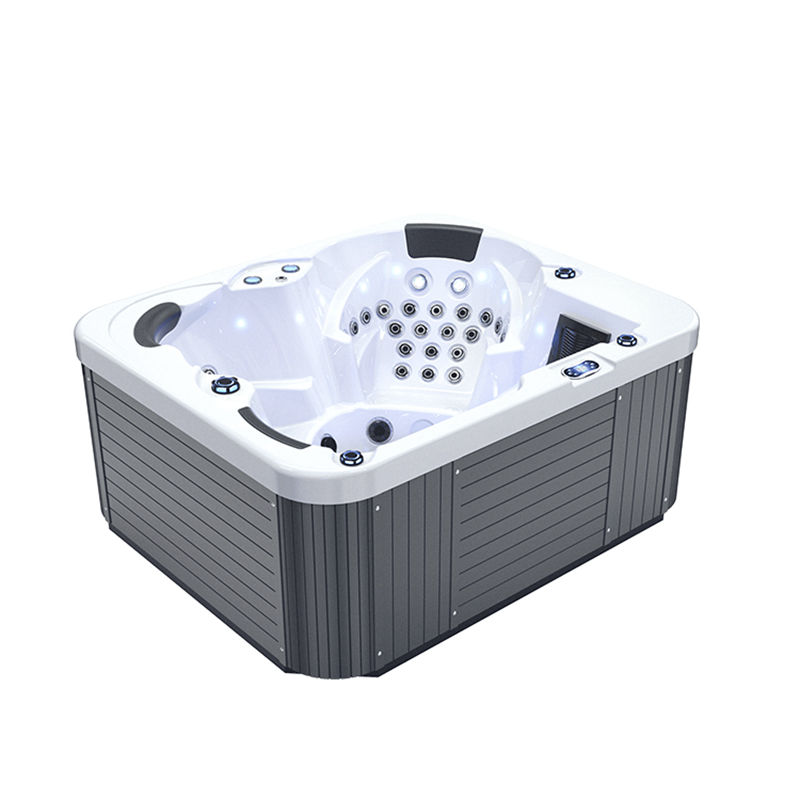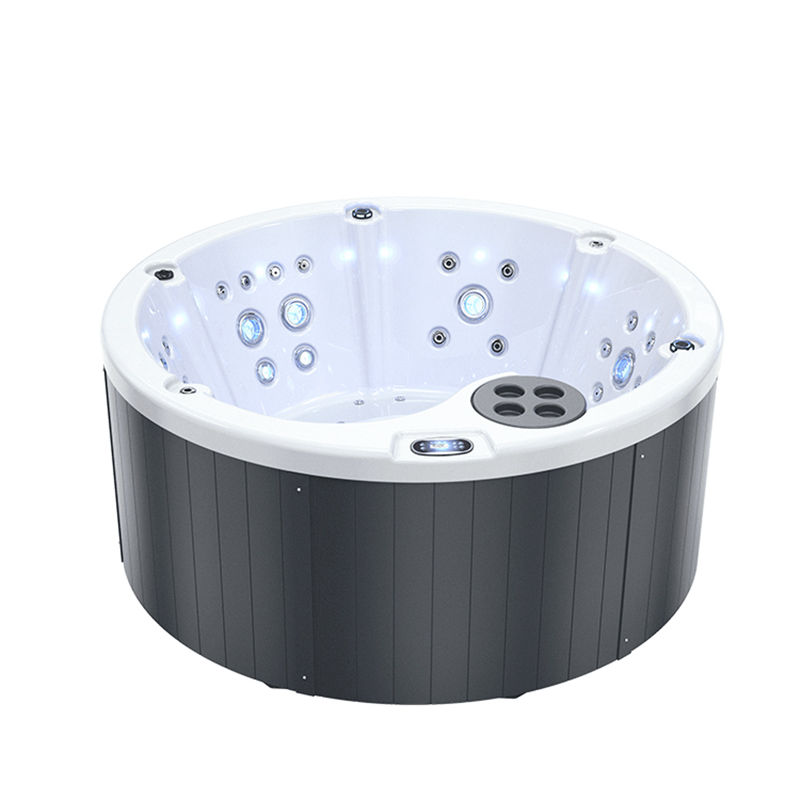Whirlpool spa hot tubs provide a comfortable and relaxing environment, but regular maintenance is essential to keeping the water clean and safe. Shock is a key chemical that helps remove organic matter from the water, kill bacteria, and prevent algae growth.
While shock is crucial for maintaining whirlpool spa hot tub water quality, using too much can have negative consequences. Therefore, this article will provide a detailed explanation of what shock is, how it works, and the potential consequences of excessive use.

What is shock?
Shock, also known as water shock, is widely used to disinfect whirlpool spa hot tubs, swimming pools, and other water bodies. It is a high-strength oxidant, typically in granular or liquid form. Its primary ingredient is typically chlorine or a non-chlorine oxidant, such as potassium persulfate or calcium hypochlorite. These chemicals, through oxidation reactions, break down organic matter, sweat, cosmetic residue, and other impurities that may affect water quality. They also effectively kill bacteria, viruses, and algae.
The primary goal of shock treatment for whirlpools, spas, and hot tubs is to maintain clean and clear water, reduce the growth of harmful microorganisms, and prevent water quality deterioration. Shock agents are typically used for routine disinfection, deep cleaning, and additional treatment when water quality is poor or water usage is frequent.
1. Chlorine Shock Agents
Chlorine shock agents are common water treatment chemicals containing high concentrations of free chlorine. Chlorine shock agents quickly kill pathogens and microorganisms in water and effectively break down impurities. Common chlorine shock agents include calcium hypochlorite and sodium dichloroisocyanurate (NaDCC). These chemicals are commonly used for routine disinfection of whirlpools, spas, and hot tubs, as well as swimming pools.
2. Non-chlorine Shock Agents
Compared to chlorine shock agents, non-chlorine shock agents (such as persulfates or peroxides) do not contain chlorine and are suitable for users who are sensitive to chlorine or in environments where the odor of chlorine in water is noticeable. Non-chlorine shock agents can also effectively oxidize organic contaminants in water, but because they lack chlorine, they lack the sustained disinfection benefits of chlorine shock agents. Therefore, non-chlorine shock agents are typically used for supplemental disinfection or for water maintenance after chlorine application.
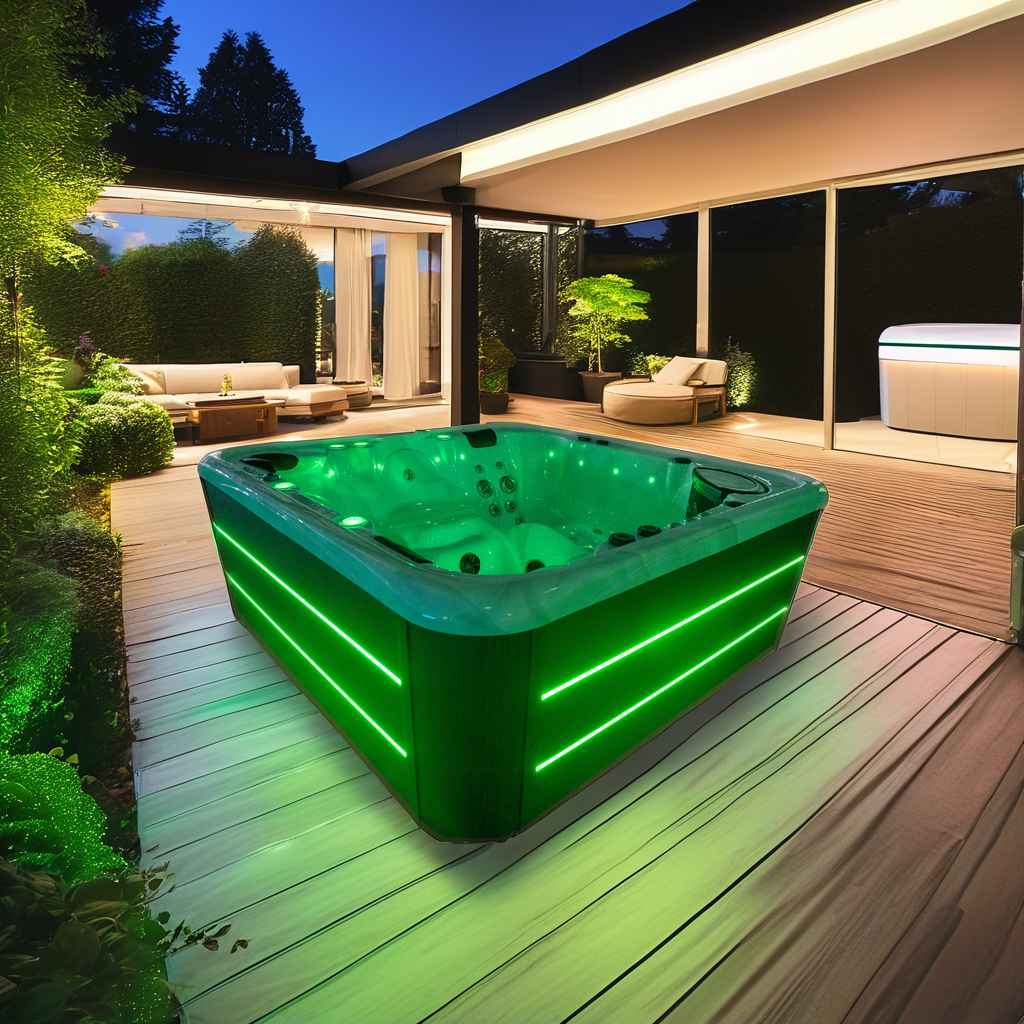
What are the functions of a whirlpool, spa, or hot tub shock agent?
The main functions of a whirlpool, spa, or hot tub shock agent can be summarized as follows:
1. Cleans the water
When a person enters a whirlpool, spa, or hot tub, their skin is left with residues such as sweat, skincare products, and cosmetics. Furthermore, dust and organic particles from the environment and air gradually accumulate in the water. These organic substances can contaminate the water, causing it to become turbid and even produce an unpleasant odor. Regular addition of a shock agent can rapidly oxidize these organic substances, maintaining clear and transparent water quality.
2. Kills bacteria and viruses
Shock agents release free chlorine or other oxidants, rapidly destroying the cell walls of bacteria and viruses in the water, thereby killing these pathogens. This is crucial for the health of whirlpool and spa users, especially when multiple people use the pool, where the risk of bacterial and viral transmission is higher.
3. Eliminating Chloramines
In whirlpools and spas containing chlorine, chlorine reacts with organic matter in the water to form chloramines. Chloramines not only reduce the disinfecting ability of chlorine but also produce an unpleasant chemical odor. Shock treatment breaks down chloramine molecules, breaking them down into free chlorine and other harmless compounds, restoring the water's disinfecting capacity and eliminating odors.
4. Preventing Algae Blooms
Algae is a very common water contaminant, especially in warm, humid environments. Regularly adding shocking agents can effectively kill algae spores, prevent algae blooms, and maintain clean water.
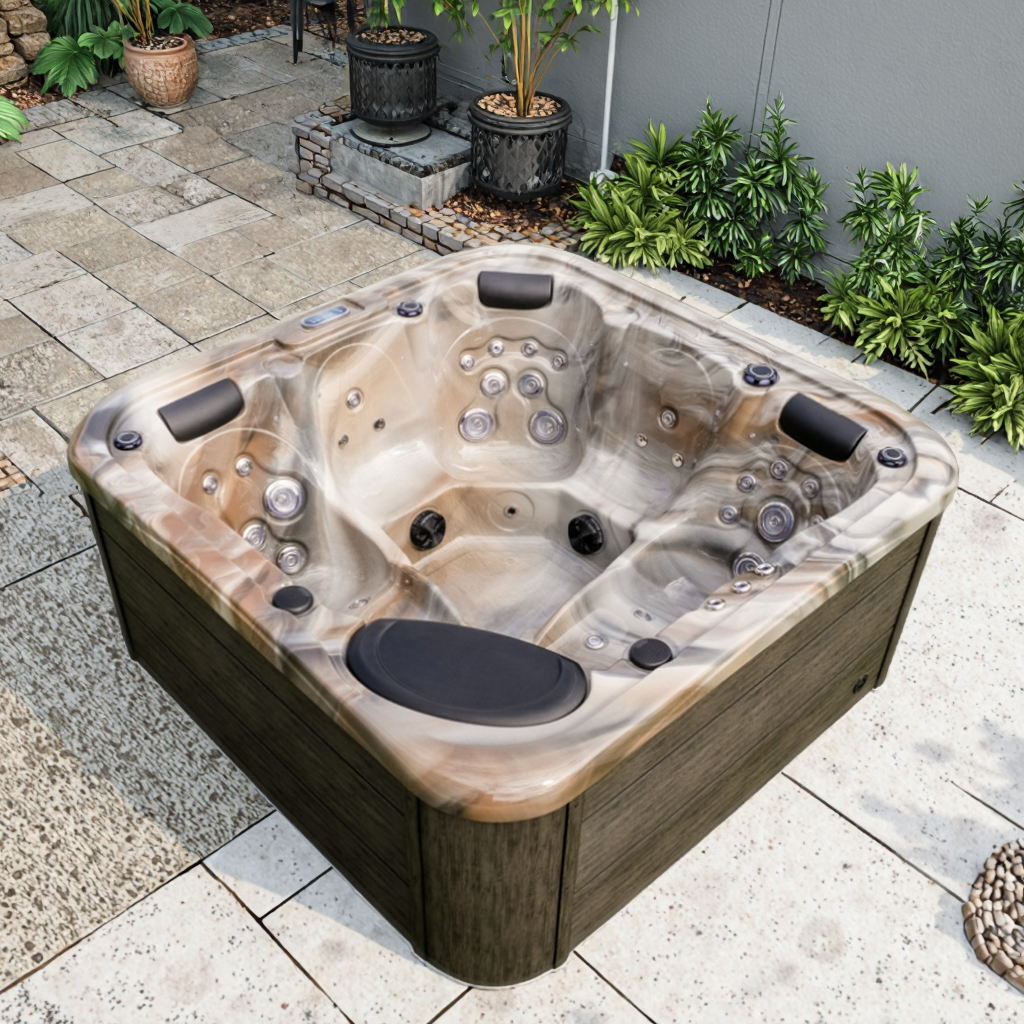
What happens if you add too much shocking agent to a whirlpool and spa?
While shocking agents are important for maintaining whirlpool and spa water quality, excessive use can have a range of adverse consequences. Improper use will not only fail to improve water quality but may also affect user health and damage the whirlpool spa hot tub equipment. The following are some potential problems caused by excessive use of shock agents:
1. Harsh Water Quality
Excessive shock agents, especially those containing chlorine, release large amounts of free chlorine. Excessive chlorine not only makes the whirlpool spa hot tub water pungent but can also cause irritation to the user's skin, eyes, and respiratory tract. The odor of chlorine is often mistaken for a sign of effective disinfection, but in reality, this strong chemical odor indicates that the chlorine concentration in the water is too high, exceeding the safe range.
2. Skin and Eye Irritation
Excessive concentrations of chlorine or other chemicals can cause harm to the human body. Whirlpool spa hot tub users may experience dryness, itching, and even allergic reactions when soaking in overchlorinated water. Eye contact with highly chlorinated water can cause irritation, redness, swelling, and tearing. Prolonged exposure to such conditions can damage the skin barrier and increase the risk of infection.
3. Damage to Bathtub Equipment
Shock agent is a strong oxidizer. Excessive use may corrode the equipment and materials of a whirlpool spa hot tub. High concentrations of chemicals may attack the nozzles, filters, heaters, and other metal components of a whirlpool spa hot tub, leading to accelerated aging, damage, or even failure. Metal and certain plastic components are particularly susceptible to corrosion and deterioration due to long-term exposure to high concentrations of chemicals.
4. Disruption of Water Chemical Balance
Excessive use of shock agent may cause a serious imbalance in the water's chemical balance. Whirlpool spa hot tub water must maintain a specific pH and alkalinity range to ensure clean water and minimize damage to the equipment. Excessive use of shock agent can cause the pH to drop or rise rapidly, making the water too acidic or too alkaline, further exacerbating harm to people and the equipment.
5. Turbidity and Sediment Formation
In some cases, excessive shock agent may react with other chemical components in the water, forming insoluble substances. These substances may settle on the bathtub surface or bottom, causing water turbidity or even the appearance of white or gray granular sediment. This phenomenon not only affects the aesthetics of your whirlpool spa hot tub, but also makes cleaning and maintenance difficult.
6. Wasteful Costs
Shock agents are typically specially formulated chemicals that are precisely measured and applied regularly. Excessive use of shock agents is not only harmful to water quality and the equipment, but also results in unnecessary waste and increases the cost of maintaining the whirlpool spa hot tub. Furthermore, excessive use of shock agents requires additional chemical balance adjustments to restore water quality, further increasing costs.
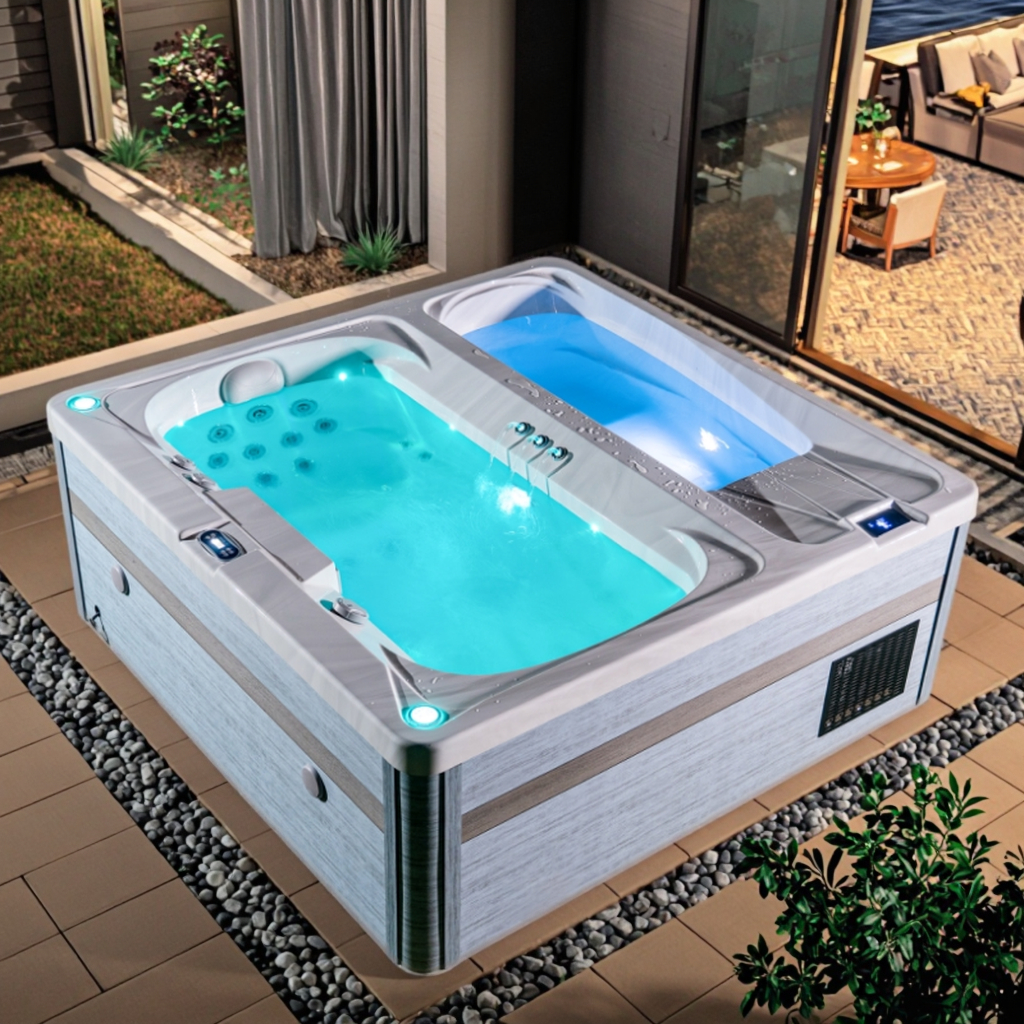
How to Use Shock Agents Properly for Whirlpool Spa Hot Tubs?
To avoid the aforementioned problems, users must master the correct shock agent application method to ensure healthy and safe water quality and maximize the protection of their whirlpool spa hot tub equipment. Here are some practical tips:
1. Follow the Manufacturer's Recommendations
Each whirlpool spa hot tub may have different water capacity, materials, and maintenance requirements, so manufacturers typically provide specific shock agent instructions. Before using shock agent, be sure to carefully read the whirlpool spa hot tub user manual or product label and follow the manufacturer's recommended dosage and frequency.
2. Test Water Quality Regularly
To ensure water quality remains within healthy and safe limits, users should regularly test their whirlpool, spa, and hot tub water, particularly for pH, alkalinity, and chlorine concentration. This can be accomplished by purchasing a home water quality testing kit. Accurately measuring water quality allows for adjustments to the shock agent dosage as needed to avoid overdosing or underdosing.
3. Avoid Frequent Shock Agent Use
While shock agents are important for maintaining whirlpool, spa, and hot tub water quality, they do not need to be used daily. Generally, shocking a whirlpool, spa, or hot tub once a week is sufficient, but the frequency depends on usage and environmental conditions. Using shock agents more frequently than necessary can lead to over-oxidation and chemical imbalances in the water.
4. Choose the Right Shock Agent
Select the appropriate shock agent for your whirlpool, spa, and hot tub based on your needs and water characteristics. Chlorine-based shock agents are suitable for more intensive disinfection, while non-chlorine shock agents are suitable for daily maintenance and for those sensitive to chlorine. When choosing a shock agent, be sure to consider your specific environment and water quality requirements to avoid making a blind choice.
Do you support international shipping?
Yes, we ship globally from Huangpu Port, China. Our experienced logistics team works with reliable freight partners to ensure safe and timely delivery. Whether you're purchasing one container or a full truckload, we coordinate everything efficiently. Buy confidently from our company and get high quality spa systems delivered right to your destination.


